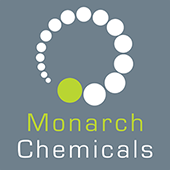With the chemical formula C3H8O3, this mainly colourless and odourless liquid (depending on grade) is composed of carbon, hydrogen, and oxygen atoms, and its unique chemical properties form the backbone of countless manufacturing processes and end products from pharmaceuticals and cosmetics to food and drink.
This blog looks at the various grades of glycerine and answers those frequently asked questions to help understand the pivotal role this product plays across countless industries.
Guide to Glycerine Grades: Unravelling the Differences and Applications

22 Aug 2023
Glycerine, also known as glycerol or glycerin, plays a pivotal role in numerous industrial applications, threading its way through supply chains to become an indispensable ingredient in countless end products.
What are the two types of glycerine?
There are two different types of glycerine: Vegetable (natural) and Petrochemical (synthetic).
Vegetable glycerine is derived from plant-based oils such as coconut or soybean. As this material is obtained from vegetable fats it is considered to be more sustainable and environmentally favourable as it comes from renewable plant sources.
Petrochemical glycerine, although now less common, is synthesised from petrochemical sources, primarily propylene or petroleum-based feedstocks.
Is glycerine the same as glycerol?
Yes, glycerine and glycerol are essentially the same compound. Glycerine is a common name for glycerol and these terms are often used interchangeably in various industries and contexts.
What are the different grades of glycerine available?
There are several different grades of glycerine all with varying levels of purity including crude, technical grade, technical UCO (used cooking oil based), feed and pharmaceutical grade. Each of these has distinct characteristics and applications. At Monarch we supply three of these – Technical, UCO Tech and Pharmaceutical EP Vegetable Glycerine.
What is technical grade glycerine and where is it used?
Technical grade glycerine can vary in colour and purity, (for example from Monarch Chemicals our technical grade glycerine is an orange to light brown colour) and this is ideal for production processes or applications that do not require a high purity product. This grade is based on vegetable oil and is often used in the manufacture of tyre shine products as well as in the manufacture of resins and construction materials.
What is used cooking oil glycerine and is it sustainable?
Used cooking oil based glycerine is derived from the recycling of waste cooking oil. By transforming a waste product into a valuable resource, this grade of glycerine is a sustainable alternative to raw vegetable oils. At Monarch we offer a 99.5% pure UCO product which is similar to highly refined grades of glycerine however it is not manufactured to meet the EP (European Pharmacopoeia) standard. It is idea for any industrial applications that requires a high purity, clear product.
How is used cooking oil glycerine produced?
Used cooking oil based glycerine is produced through a refining process known as transesterification. It involves converting waste cooking oil into biodiesel and glycerine. The glycerine is separated from the biodiesel and further purified to meet industry standards.
What is vegetable glycerine and what are its unique features?
Vegetable glycerine is derived from non-GMO vegetable fats. It is a natural and versatile grade of glycerine, often used in food, cosmetics, and personal care products. As a humectant (a substance that attracts and retains moisture) it is renowned for its moisturising properties, making it a popular ingredient in skincare and haircare formulations.
As a clear product with a minimum purity of 99.7% vegetable glycerine from Monarch meets the requirements of the European Pharmacopoeia and is used extensively within the e-cigarette market to manufacture vape products.
What is glycerine EP?
EP stands for European Pharmacopoeia which is a reference work for the quality control of medicines and healthcare products. It provides a set of standards and specifications for the quality and purity of active pharmaceutical ingredients (APIs), excipients, and finished pharmaceutical products.
In the context of glycerine, the European Pharmacopoeia provides specific monographs and standards that outline the quality requirements for glycerine intended for pharmaceutical use. These monographs detail parameters such as purity, identification tests, impurity limits, and testing methods that must be met by glycerine manufacturers to ensure its suitability for pharmaceutical applications.
When glycerine is manufactured to meet the European Pharmacopoeia standards, it signifies that the product has undergone rigorous quality control and testing processes to ensure its safety and efficacy for use in pharmaceutical formulations. This level of standardisation is essential for pharmaceutical companies to produce consistent and high-quality medications.
Manufacturers of glycerine who adhere to the European Pharmacopoeia standards demonstrate their commitment to producing glycerine that meets the stringent quality requirements demanded by the pharmaceutical industry, contributing to the overall safety and efficacy of pharmaceutical products.
We hope this comprehensive guide has provided valuable insights into the various grades of glycerine. If you have further questions or need assistance with choosing the right glycerine grade for your requirements, feel free to contact us or visit our glycerine product page .
